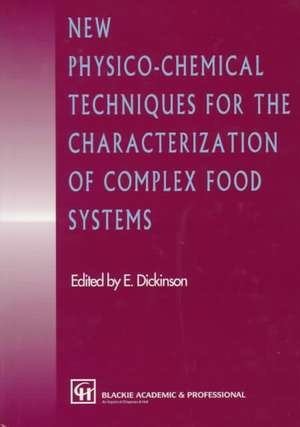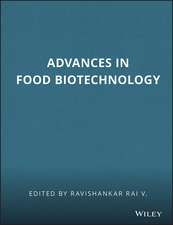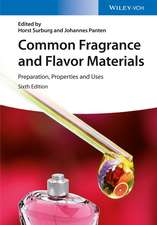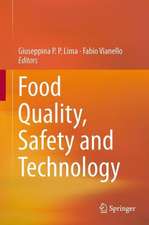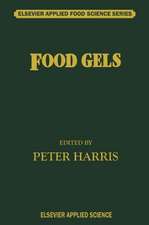New Physico-Chemical Techniques for the Characterization of Complex Food Systems
Autor E. Dickinsonen Limba Engleză Hardback – 30 dec 1995
| Toate formatele și edițiile | Preț | Express |
|---|---|---|
| Paperback (1) | 948.47 lei 6-8 săpt. | |
| Springer Us – 17 sep 2012 | 948.47 lei 6-8 săpt. | |
| Hardback (1) | 954.62 lei 6-8 săpt. | |
| Springer Us – 30 dec 1995 | 954.62 lei 6-8 săpt. |
Preț: 954.62 lei
Preț vechi: 1164.17 lei
-18% Nou
Puncte Express: 1432
Preț estimativ în valută:
182.66€ • 190.73$ • 150.84£
182.66€ • 190.73$ • 150.84£
Carte tipărită la comandă
Livrare economică 16-30 aprilie
Preluare comenzi: 021 569.72.76
Specificații
ISBN-13: 9780751402520
ISBN-10: 0751402524
Pagini: 356
Ilustrații: XII, 356 p.
Dimensiuni: 155 x 235 x 22 mm
Greutate: 0.71 kg
Ediția:1995
Editura: Springer Us
Colecția Springer
Locul publicării:New York, NY, United States
ISBN-10: 0751402524
Pagini: 356
Ilustrații: XII, 356 p.
Dimensiuni: 155 x 235 x 22 mm
Greutate: 0.71 kg
Ediția:1995
Editura: Springer Us
Colecția Springer
Locul publicării:New York, NY, United States
Public țintă
ResearchDescriere
'There is no higher or lower knowledge, but only one, flowing out of experimen tation. ' (Leonardo da Vinci, 1452-1519) Food materials are complex in terms of composition, structure and mechanical properties. In order to understand the relationship between these different kinds of complexity, the experimental food scientist has a wide range of physico-chemical techniques at his or her disposal. But, in practice, of course, there are often severe limitations on the techniques which are available for any particular investigation. Apart from obvious constraints associated with instrument cost and accessibility, one com mon problem is a lack of knowledge by the non-expert about the capabilities and limitations of every new advance in instrumentation. No individual worker in the field of food science can become expert in more than a very small number of experimental techniques. On the other hand, most of us wish to know enough about the major emerging experimental technologies to enable us to make a realistic assessment of what they may have to contribute towards any new problems that we may meet. This book collects together in a single volume an up-to-date set of introductory articles describing a range of new physico-chemical tech niques which can be used to probe food structure at the molecular, colloidal and microscopic levels. Each individual chapter is written by an acknowledged expert in his field.
Cuprins
Advances In Electron Microscopy. Imaging Food Systems by Confocal Laser Scanning Microscopy. Scanning Probe Microscopy of Food-Related Systems. Electron Spin Resonance Spectroscopy for Detection of Irradiated Food. Ultracentrifugation of Food Biopolymers. Rheology of Bipolymer Solutions and Gels. Fracture Mechanics of Solid Foods. Recent Developments in Infrared Spectroscopy and Microscopy. Ultrasound Studies of Shelf-Life and Crystallization. Dynamic Surface Tension and Dilatational Interfacial Properties. Light Scattering Studies of Colloid Stability and Gelation. Small-Angle Neutron Scattering and Neutron Reflection. High Resolution Nuclear Magnetic Resonance Spectroscopy of Solid and Semi-Solid Food Components. Magnetic Resonance Imaging in Food Science. References. Index
